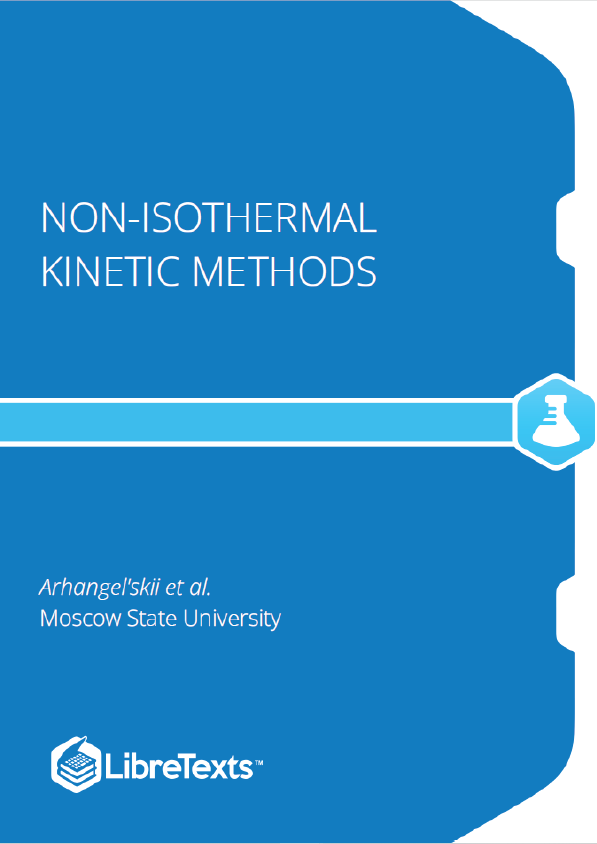2.2 Mass Transfer Conditions
The mathematical description of mass transfer events accompanying heterogeneous processes is beyond the scope of this section. Rather, the aim is to show, at the qualitative level, how they can be experimentally affected. Let us consider the simplest heterogeneous process described by Equation 1.1.
In this process, several possible diffusion steps can be discerned. First, this is diffusion of gaseous products through the solid surface–environment interface. This mass transfer step can be controlled by purging the reaction volume with an inert gas. Figure 2.1 shows the results of studying the dehydration of CuSO ·5H O. The curve reflecting a three-stage process was obtained under dynamic environment conditions. The air flow rate was 40 mL/min. The curve indicates the loss of five water molecules; the water is removed stepwise, two molecules at a time in 40–180°C region and the fifth molecule is released at 210–270°C.
The TG curve of a two-stage process pertains to the process in a static atmosphere. Figure 2.1 demonstrates that the process in a static atmosphere has another mechanism as compared with the process in an open crucible in the air flow. It is believed that diffusion hindrances arising in a static atmosphere are responsible for a significant effect of the back reaction. Since the CuSO ·5H O dehydration is a reversible process, its kinetics changes noticeably. If changing the flow rate does not change the process rate, this step of mass transfer has no effect on the overall rate.
Second, the mass transfer in the porous medium of the initial reagent is worthy of consideration. The simplest way to verify the significance of this step is to carry out a series of experiments with a sample of different thickness at the same external surface area. If the change in the layer height has no effect on the process rate, the diffusion in the porous reagent can be approximately considered to have little effect on the process as a whole.
The step of mass transfer in the layer of the solid reaction product is the hardest to identify. A possible way to reveal diffusion limitations at this step is to determine how the composition changes in different parts of the solid reagent at various depths. However, this procedure is rather laborious and necessitates the use of appropriate analytical methods and a special sample preparation. To determine the role of diffusion limitations in the product layer, it is common practice to compare the propagation kinetics of the interface measured at different conversions. If diffusion hindrances exist, the Arrhenius parameters decrease with an increase in the product layer thickness. If the temperature coefficient of the reaction rate E/R (in general case it is better to use E/R instead of E, because E is measured in J/mol while for thermoanalytical data of any material or blend using of “mol” unit is meaningless) remains constant at different conversions, it can be stated that this type of diffusion is not a rate-limiting stage.
Thus, diffusion hindrances can manifest themselves at different steps of the process under consideration and can depend on both the design of equipment and the nature of substances involved in the process.
A conclusion that can be drawn from the above is that to mitigate a noticeable effect of transfer processes of experimental results, small amounts of the initial reagent (a few milligrams) with minimal porosity or lower heating rates should be used. In addition, it is important that the sample is placed on a rather large surface and that purge gases at a rather high flow rate are used.
2.3 Nucleation
If our experiment is carried out under conditions such that transfer phenomena have no effect on the shape of thermoanalytical curves, the reaction can be thought of, to a first approximation, as a quasi-one-stage process representing the chemical transformations of reaction 1.1. However, the experimental results depend also on a change in the morphology of the initial reagent, i.e., on the formation of the reaction product, first of all, on the reagent surface. In this case, the conversion kinetics is dominated by the nucleation of the new phase and the subsequent growth of its nuclei. For heterogeneous processes, we are usually not aware of what atomic or molecular transformations lead to the nucleation of the product phase, so that the process is represented by a set of some formally geometric transformations. Non-isothermal kinetics is aimed at finding the forms of functions and their parameters describing these transformations.











